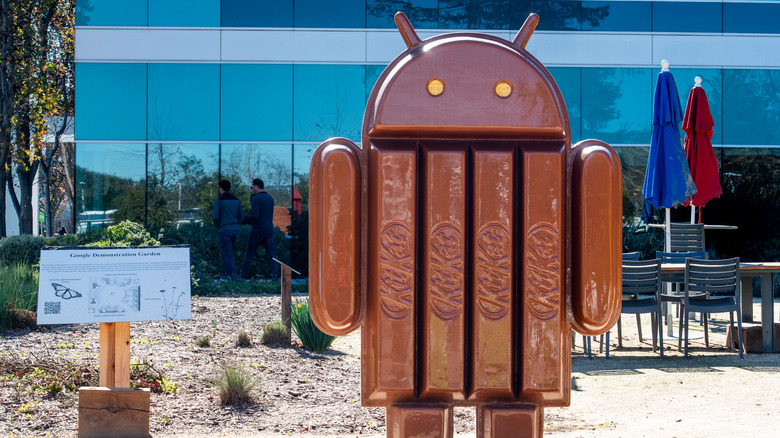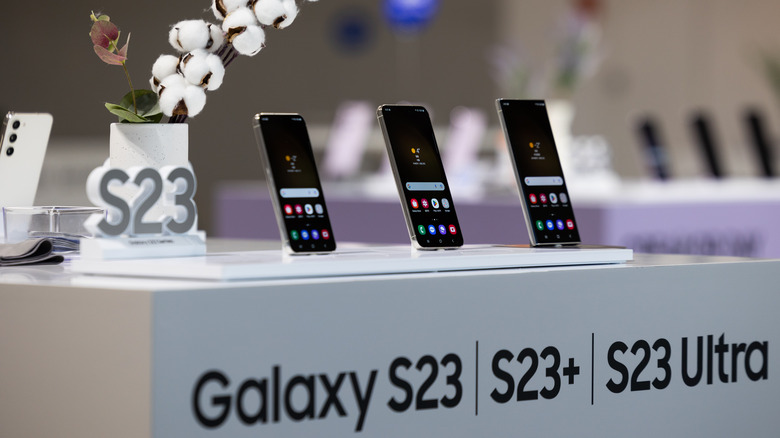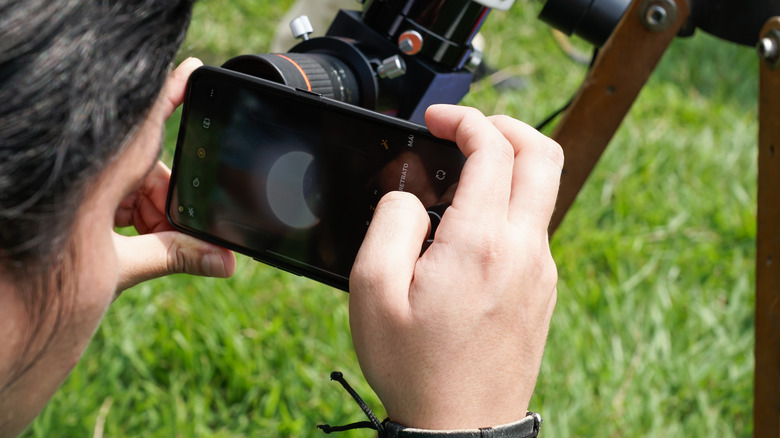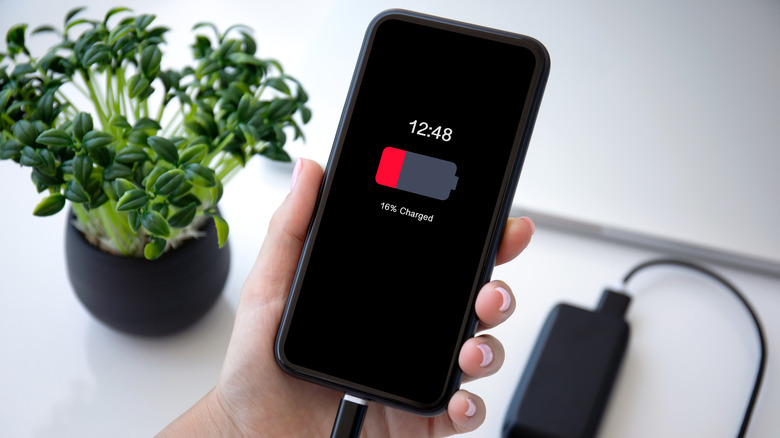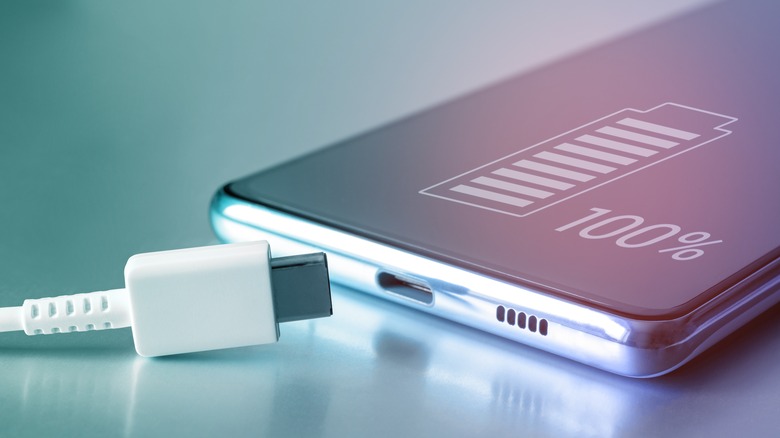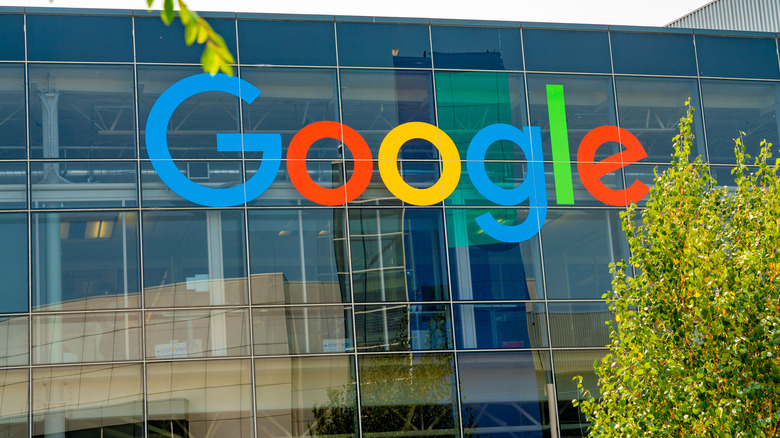Shopping For A New Android? Here's How To Pick The Right Device For You
The holiday shopping season is upon us, meaning that a lot of you are going to be in the market for a new smartphone. If you're an iPhone user, the options are relatively straightforward. If you prefer Android, though, the dizzying array of manufacturers, feature sets, and, to a lesser extent, form factors make figuring out what's best for you a dizzying affair.
Do you need a flagship phone with all that entails? Or could you do okay with something mid-priced? How do specific features influence that calculus? And if you don't like the typical gigantic Android phones available in 2023, how many options do you have, especially if you're limited to what's available directly from your carrier?
Let's take a look at some of the key features and other specs that you should keep an eye on when Android phone shopping this holiday season, as well as how those criteria influence how much you have to spend to get the kind of phone that you want.
The options for smaller phones are few and far between
There's an unfortunate reality for Android users with small to medium-sized hands, particularly those who enjoy one-handing their phone: The vast majority of Android phones currently on the market are gigantic. The conventional wisdom, going back to how LG promoted its G2 flagship when it launched in September 2013, is that most adults should be able to comfortably hold a phone in one hand if it's 2.8 inches or less wide. As phones have grown, though, fewer and fewer handsets have come in under 2.8 inches wide, with just the base model Samsung Galaxy S flagships — as opposed to the larger + (Plus) and Ultra models — consistently being smaller while commonly stocked by carrier stores.
The difference is something you may not notice until you've spent a good bit of time with a bigger handset, so before you start narrowing down what phones you might be interested in on a feature-level basis, you should find out how wide your current phone is. If it's more than 2.8 inches wide — especially if it's more than 2.9 inches wide — and you don't have any hand, arm, shoulder, or neck pain that happens to be on the side where you usually hold your phone, you'll probably be okay with most phones on the market. If you are smarting from using your phone, you need to go with something smaller. And if you've already got a smaller phone? Stick with that size range.
Options are limited, though: You have the base Galaxy S22 and S23 phones that you can get via your carrier or unlocked, the Asus Zenfone 10 from Asus resellers, and ...that's about it.
What kind of camera are you looking for?
The best camera is the one that's already in your pocket, but if you're looking for a new phone, it's one of the main distinguishing factors as it becomes harder for manufacturers to come up with fresh new features to differentiate their flagships from the competition. How much you want out of your phone's camera is going to dictate what you get, but there's a push/pull effect with other factors, as well.
The aforementioned form factor issue limits you to phones with a 2x (for the Asus Zenfone 10) to 3x (for the Samsung Galaxy S22 and S23) optical zoom, for example. (Optical zoom is how far the camera can zoom in using the physical lenses without the phone adding digital zoom, which is effectively a fancier version of zooming in on a photo on your phone or computer.) So, if you have your heart set on a phone with a more sophisticated camera with more powerful optical zoom, you need to go with something physically bigger like the Galaxy S22 Ultra or S23 Ultra with their 10x zoom.
The Google Pixel series also gets high marks for its cameras, with the Pixel 7 Pro and Pixel 8 Pro being the options with optical zoom. The Android experts at sites like Android Authority and Android Police have full "best camera phone" lists that get into more obscure options, as well, featuring phones from companies like Xiaomi (the 13 Pro and 13 Ultra), Vivo (the X90 Pro), Honor (the Magic 5 Pro), Sony (the Xperia Pro-Land Xperia 1 V), Oppo (the Find X6 Pro), and Huawei (the P60 Pro).
Battery life
Battery life is a critical metric to judge smartphones when evaluating a potential purchase, but it's also tricky. Testing battery life isn't an exact science, so much as you need to find a website with a battery testing formula that you've found best represents your usage patterns, as it's not exactly uncommon for users to anecdotally find their phones having better or worse battery life than reviews suggested.
That said, as the chipsets used in smartphones have gotten more efficient and mobile operating systems have been increasingly optimized in kind, getting saddled with a flagship that has an incredibly disappointing battery life isn't nearly as common as it used to be. That manufacturers have been including beefier batteries in recent years also helps.
With weird battery drains becoming less of a concern, spec-ing out the battery itself is a factor to consider. Handset size is a factory here, as a bigger phone obviously allows room for a bigger battery. Still, efficiency matters, with Tom's Guide noting in their 2023 best battery life rundown how the Samsung Galaxy S23 Ultra has significantly better battery life than the S22 Ultra despite both having 5,000 mAh batteries.
It all comes down to how the S23 Ultra's Snapdragon 8 Gen 2 system on a chip is significantly more efficient than the Gen 1 version in the S22 Ultra. Overall, though, it's best to read reviews and "best battery life" lists. If a clear consensus has been reached about a given phone having great battery life, you can probably trust that you'll see similar results from typical daily use.
Charging options
The increasing ubiquity of USB Power Delivery over USB Type-C cables has simplified finding appropriate aftermarket chargers for your phone a lot easier, as the days of using the "wrong" charger and causing damage by overcharging your phone are effectively over. That doesn't mean there isn't more to know about how to find the ideal charger for your phone, though.
More specifically, though you can't overcharge your phone anymore, how much wattage your phone can make use of when plugged into a given charger can vary. As fewer phones ship with chargers to cut costs and reduce e-waste, this also means that getting the best possible charging performance may require getting a beefier charger than the 18W variety that you might have lying around when they were incredibly common a few years ago.
For example, the aforementioned Samsung Galaxy S23 Ultra, with its arguable best-in-class battery life, needs at least a 25W charger to achieve fast charging. However, you can also get what Samsung calls Super Fast Charging using a 45W charger and a 5A cable. All of this is to say that if you want to get a phone with the quickest possible charging, you should research exactly what each phone is capable of and what kind of charger you need to buy or repurpose to make the most of it.
How many years of OS upgrades and security patches will you get?
Arguably, the biggest negative to the Android ecosystem is how fractured it is in terms of software updates. Each manufacturer is responsible for tailoring its own implementation of Android, and the mobile service carriers have a say, too. What this means is that the frequency and urgency of software updates vary wildly from manufacturer to manufacturer and even device to device. You don't want to buy a phone only to learn that its security could become compromised by an OEM that isn't committing to long-term updates, so it's best to research each company's policies and promises.
On the better end of the scale, Google's Pixel 8 series is going to get a whopping seven years of both major OS version updates and security patches through late 2030. On the other hand, Motorola has long dropped support for its many phones distressingly quickly, regardless of whether it was a budget, mid-priced, or flagship model, but that's improved of late.
Nowadays, you can expect the Lenovo-owned brand to provide two to three major OS upgrades and three years of patches for its flagships and a less generous single upgrade with two years of patches on its popular budget and mid-priced phones. Samsung, meanwhile, probably has the best policy overall, with its newer phones across all price points getting three to four years of upgrades and three to five years of patches.
This is an incredibly important factor, but it's not an obvious one, so make sure to do your research.
